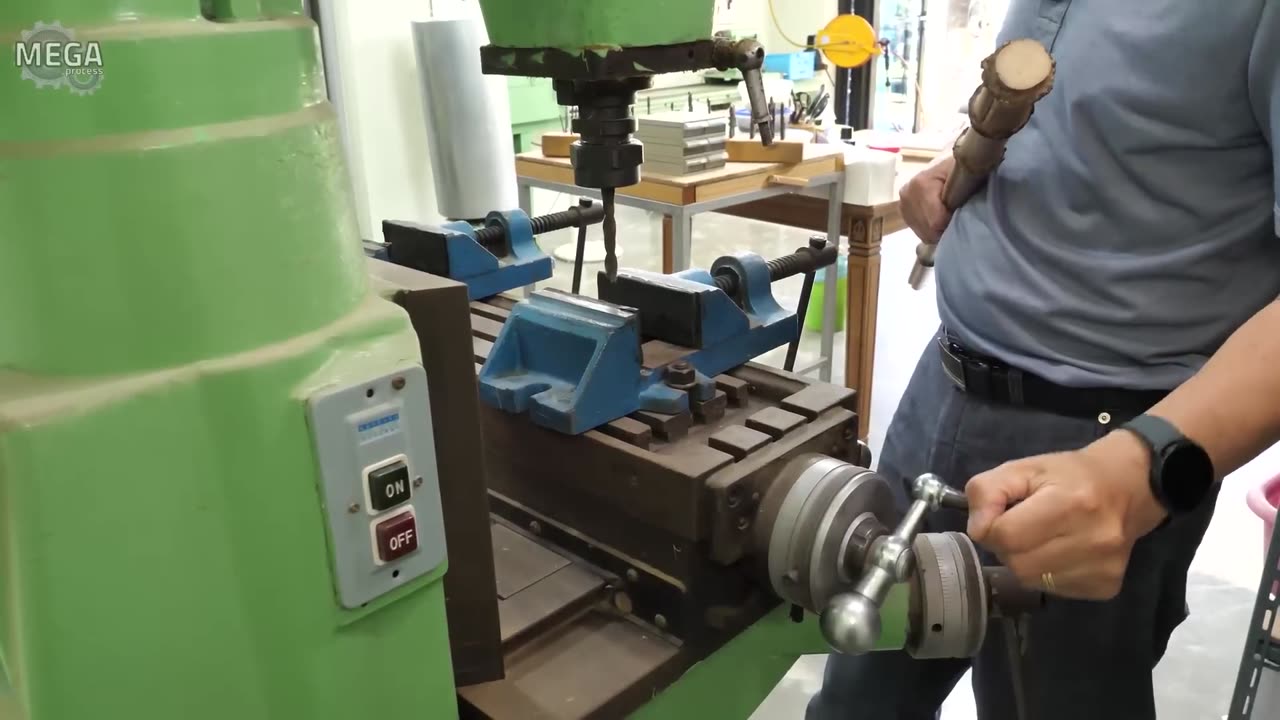Premium Only Content

n the process of making a long bamboo flute and then I'll provide a paragraph on the topic. 🎶
Certainly! Let's break down the process of making a long bamboo flute and then I'll provide a paragraph on the topic. 🎶
## **Process of Making Long Bamboo Flutes**
1. **Selecting the Right Bamboo**:
- Begin by choosing a suitable bamboo stalk. Look for one that is straight, thick-walled, and free from cracks or knots. The type of bamboo used can impact the sound quality of the flute.
2. **Preparing the Bamboo**:
- Cut the bamboo to the desired length for your flute.
- Remove any leaves, branches, or nodes.
- Split the bamboo lengthwise and hollow out the inner chambers.
3. **Shaping and Tuning**:
- Shape the bamboo into the desired flute design. This involves carving the embouchure (mouthpiece) and finger holes.
- Tune the flute by adjusting the size and placement of the finger holes. Each hole affects the pitch of the notes produced.
4. **Finishing Touches**:
- Sand the exterior of the flute to smooth any rough edges.
- Apply a protective finish (such as oil or varnish) to enhance durability and appearance.
5. **Testing and Adjusting**:
- Play the flute to test its sound quality.
- Make any necessary adjustments to achieve the desired tone and pitch.
6. **Decorating and Personalizing**:
- Some flutemakers add decorative elements like carvings, paint, or bindings.
Remember that the process may vary depending on cultural traditions and individual preferences. Each flutemaker brings their unique touch to the craft, resulting in diverse and beautiful bamboo flutes. 🎶
---
Now, let's create a paragraph about the process of making long bamboo flutes:
**"Crafting a long bamboo flute is a meticulous and artistic endeavor. It begins with selecting the right bamboo stalk—straight, thick-walled, and free from imperfections. After cutting and preparing the bamboo, the shaping process begins. Carving the embouchure and finger holes requires precision, as each detail affects the flute's sound. Tuning the flute involves adjusting hole sizes to achieve the desired pitch. Once shaped, the flute is sanded and finished, ensuring a smooth exterior. Testing and adjusting follow, fine-tuning the sound quality. Finally, some flutemakers add personal touches, turning each flute into
-
 3:38:57
3:38:57
Digital Social Hour
1 day ago $15.04 earnedAndrew Tate EXPOSES the Truth About Legal Battles, Politics & Masculinity | Andrew Tate DSH #1231
45.5K21 -
 2:26:29
2:26:29
Laura Loomer
7 hours agoEP108: Dems Embrace Domestic Terrorism To "Get Trump"
54.5K18 -
 3:01:51
3:01:51
Right Side Broadcasting Network
10 hours agoWATCH: NASA’s SpaceX Crew-10 Launch
105K39 -
 2:06:17
2:06:17
Glenn Greenwald
9 hours agoJudge Orders Hearing on Columbia Student Deportation Case; Is the Ukraine Ceasefire Plan Serious? Trump Attacks Thomas Massie for His Budget Vote | SYSTEM UPDATE #422
120K160 -
 47:16
47:16
BonginoReport
11 hours agoTrump-Elon Bromance Triggers The Libs (Ep.03) - 03/12/2025
153K279 -
 4:03:41
4:03:41
Barry Cunningham
13 hours agoTRUMP DAILY BRIEFING: PRESIDENT TRUMP PRESS CONFERENCE | DEMOCRATS IN PANIC!
101K97 -
 1:56:30
1:56:30
Melonie Mac
10 hours agoGo Boom Live Ep 40!
57.2K7 -
 1:58:30
1:58:30
Kim Iversen
10 hours agoDOGE, Trump, Aliens and Remote Viewing: A Deep Dive into the Unknown
73K66 -
 1:20:08
1:20:08
Redacted News
12 hours agoPutin smells a TRAP as Ukraine agrees to Trump's U.S. ceasefire plan | Redacted w Clayton Morris
182K179 -
 51:59
51:59
Candace Show Podcast
12 hours agoMahmoud Khalil’s Detainment: Fighting Terrorism Or Speech? | Candace Ep 158
133K462